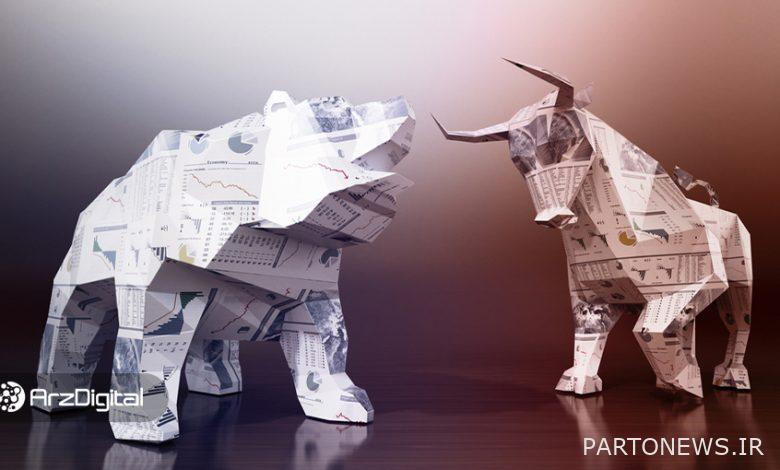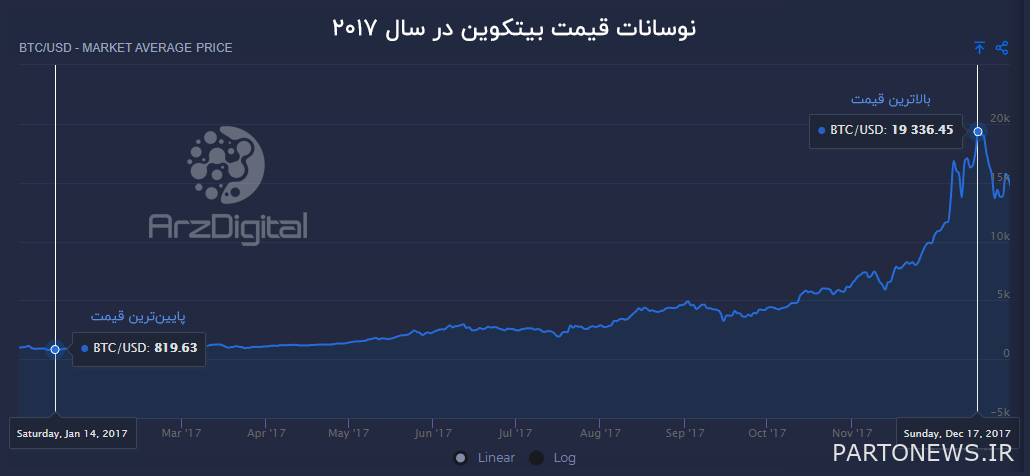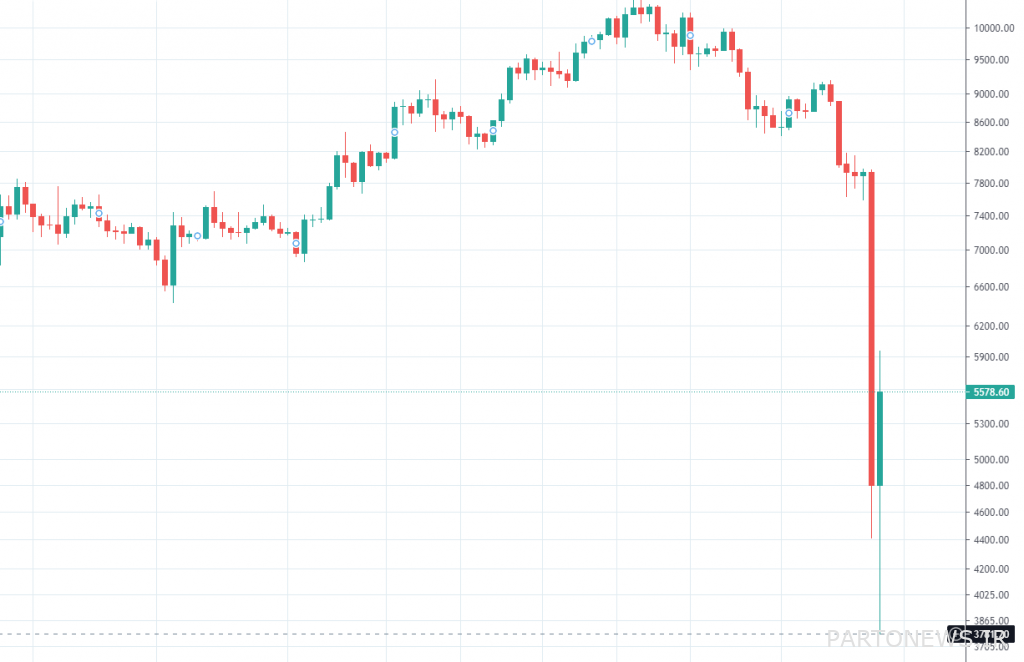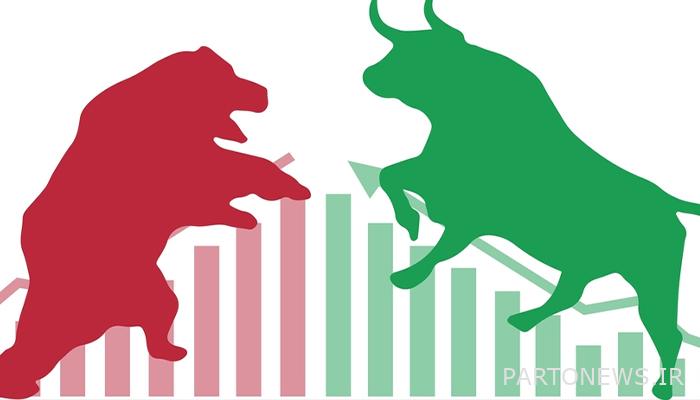What is the difference between trading in a bull and bear market for digital currencies?

The digital currency market is volatile compared to other financial markets, and at any given moment it is possible to see incredible jumps and falls with the release of a news story and even with the tweet of an influential figure; But this should not be a concern for us; Because the market for these currencies is two-way. The two-way market for digital currencies means that both uptrends and downtrends can be exploited; So it is wise to be prepared for both uptrends and downtrends so that we can maximize our profit opportunities.
One of the interesting features of the digital currency market is the large correlation that exists between bitcoin and the market as a whole. As experience has shown, whenever bitcoin is on the rise, the price of almost all coins increases, and vice versa. In fact, in the digital currency market, all eyes are on bitcoin, and such over-reliance on a particular asset is less visible in the market. This distinguishes the digital currency market from traditional markets and increases the importance of understanding the mechanism of the digital currency market.
Continue to help Content Published on the Quinn Telegraph website, we explain the differences between the bull and bear markets and the strategies that can be used in each of these markets. Stay with us.
What is a Cattle Market?
In summary, The cattle market is an upward market that has been accompanied by a growth in investor confidence.
Activity in asset markets never stops and trading in these markets is ongoing. In the meantime, price fluctuations were constantly occurring and markets were entering ascending and descending phases.
When prices rise continuously for a long time, we can say that we are facing a bullish or bullish market.
The reason for listing the bullish market as “bull market” is not very clear; But most people believe that the term refers to a bull attack that raises its branches. These types of markets can last for months or even years, and the exact date of this period can only be determined by the end of it.
One of the main characteristics of beef markets, in addition to rising prices, is the increase in investor confidence. In such markets, investors are optimistic about the future of prices and believe that prices will go up.
Unfortunately, the confidence and optimism of investors will not last forever and will eventually stop. At the same time, we are facing a sharp decline in prices and the beginning of a downward trend.
In general, the signs of a bull market in the field of digital currencies are as follows:
- Prices have been rising for a long time;
- There is a lot of confidence in the market;
- Some projects are priced higher than their value;
- Following the spread of good news, prices are rising sharply;
- In the event of bad news, prices fall sharply;
- The mainstream media is talking about digital currencies;
- People who were not previously interested in digital currencies would like to research this.
One of the most famous examples of the bull market is the bull market in 2017. The price of bitcoin jumped dramatically this year, from $ 900 at the beginning of the year to about $ 20,000.

How to invest in a bullish market?
The best way to make a profit from bullish markets is to buy at the lowest possible price and wait for the price to rise.
Once investors recognize the uptrend, they try to buy the asset at the bottom of the cycle and then sell it at the peak. Any losses during a bullish market will be temporary and will allow investors to continue investing with confidence that they will eventually make a profit.
One of the simplest but most popular strategies in bullish markets is the “ride the trend” strategy. In this strategy, investors choose coins that are in a strong uptrend and try to make the most of the rest of the uptrend. Other well-known strategies include “buy and hoodle”, in which users keep their currencies up during the uptrend and sell them when the price reaches its maximum.
However, setting a time limit for a job market does not seem wise. Instead of trying to schedule markets, use the principle of dollar averaging. Dollar mediation means allocating a fixed amount to buy stocks or currencies according to a specific schedule. This method helps investors make the most of the corrections and setbacks that occur in the market.
Read more: Three low-risk digital currency trading methods for beginners
What is a bear market?

The bear market refers to the period in which the price of assets decreases and at the same time, investor confidence and corporate profits decrease.
Like a bear that pulls its claws down during an attack, the bear market is usually characterized by the fact that an asset class falls by more than 20% over a long period of time (approximately two months).
Bear markets are the exact opposite of bull markets and usually start after prices reach a peak. The downtrend may last for weeks or years.
During these periods, the main feelings of investors are often around Fear, Uncertainty and Doubt spins; Terms that use the term FUD (FUD stands for Uncertainty, Fear, and Doubt). New investors often avoid market participation and investment during these periods because of such sentiments.
The 50% drop in the price of Bitcoin on March 12, 2020 (coinciding with Thursday, March 13, 2017), known as Black Thursday, was one of the most obvious examples of declining markets. On this day, Bitcoin witnessed the biggest daily drop in its ten-year history, falling from $ 8,000 to $ 3,600 in just a few hours. During the crash, about $ 1 billion worth of Bitcoin liquidity futures were acquired.
The spread of the corona virus in the world can be considered as one of the main causes of this event, which overshadowed not only bitcoins and altcoins, but also other stock markets.

How to invest in a declining market?
Investors often see declining markets as a good opportunity to buy.
Trading in declining markets is usually difficult for newcomers; Because in such a market, the probability of loss is greater than the profit; But when this cycle is reversed and asset prices rise, the purchases you make during the downtrend can bring you good profits.
The problem here, however, is that no one knows how long this fall will last and how much prices will fall. So the biggest risk in these markets is buying early or missing an opportunity for a profitable investment.
For these reasons, investors are encouraged to create opportunities over time instead of one-time purchases. Instead of trying to figure out when the market is reaching the bottom, users can constantly create new opportunities as prices fall. In this way, they can take advantage of the price reduction.
One of the most popular strategies in descending markets that is suitable for more experienced investors is short selling. Borrowing sales occur when traders sell the borrowed digital currencies at a high price, repurchase it at a lower price, pay off their debt, and reap the benefits of the price difference.
Why is it important to understand the type of market?

Successful trading in different markets requires different strategies.
Bear and cow markets will have a huge impact on your portfolio; Therefore, all investors should consider the type of market in which they invest in order to choose the best strategy to reduce the risk in their portfolio.
However, the stock market has always proven to be a positive return for investors in the long run.
Challenges in identifying the type of market
Both ascending and descending markets have challenges that traders must face and understand. During a macro trend, one of the main challenges for traders is to avoid falling into the traps of cows and bears. Focusing on the macro trend (ascending or descending) is one of the best ways to avoid unwanted results.
During an uptrend, prices will fall several times. Many traders leave their trading position as soon as they see a red candle; But after a short time, they realize that this price reduction is temporary and the upward trend continues.
The same thing happens in downtrends. As soon as a green candle is recorded on the chart, many traders enter the market at high prices; But they soon realize that the market will continue to fall.
Another challenge that traders face in rising and falling markets is their emotions. While having a venture capitalist can be a good trait for investors, emotions can negatively affect their performance. So distinguish between your investment and your emotional and irrational feelings.
Conclusion
The concepts of ascending and descending markets are important concepts of financial markets as well as digital currencies. Traders need to understand the features and characteristics of these markets in order to have successful trades.
Using a comprehensive set of trading indicators is one of the best ways to achieve success. However, there are some challenges that traders need to be aware of. Putting aside emotions and trading with the help of fundamental and technical analysis are among the best ways to deal with price fluctuations.
It is expected that in the future, the digital currency market will experience several ups and downs. Increasing awareness and knowledge about these types of markets allows you to reduce your investment risk and get the most out of buying and selling digital currencies.

